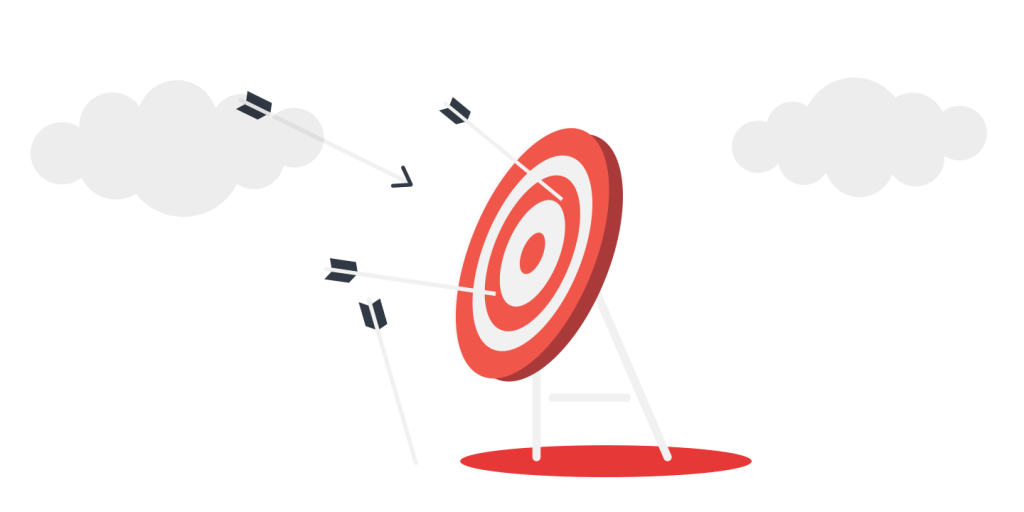Use your CSAT scores to open up conversations with other teams about where issues are, who is responsible for fixing them, and how they will get fixed.
Traditionally, customer satisfaction (CSAT) surveys provide insights about how your customer support team is performing. That said, they can also be useful indicators for other teams’ successful behaviors and a valuable tool in promoting cross-functional collaboration to level-up your customer experience.
Instead of viewing your CSAT scores in a silo with your support team, find ways to review them with other teams. Don’t hoard those deliciously useful customer insights to yourself—bring everyone into the loop and create excellent cross-functional CX.
 Open up communication
Open up communication
Speaking with someone that doesn’t speak the same language can be challenging. Customer Satisfaction score results give different teams, like Product and Support, a common language that they both understand: caring for the customer.
Most businesses only hear from 4% of dissatisfied customers, with the other 96% of unhappy customers choosing to churn without any explanation. When your whole company is looking at the same thing, you’re all able to talk about the issues coming up in your results and fix them directly. There’s no one left out of the loop.
How to do it
Discuss CSAT more regularly at top-level meetings or company-wide functions. Shed light on particularly meaningful changes or qualitative results to increase team buy-in. With this shared context, CSAT results work more meaningfully in conversations outside of support.
 Empower teams with the knowledge
Empower teams with the knowledge
CSAT measures everything the customer touches: from your blog posts and your product to their support experience, and even their buying journey. Beyond just uncovering what customers do or don’t like, your CSAT scores also give you the knowledge and understanding of your business’s critical trends. For instance, after a massive release, do you see an influx of readers to your blog or website? If so, that may tell you that focusing on those two areas, along with the product experience itself, is vital.
CSAT helps to break down silos within teams so they have the same level of knowledge and experience. CSAT results are straightforward. Reviewing your CSAT as a company, instead of separately across teams, gives you deeper insights into precisely what your customers care about. Use this intimate knowledge to improve your customer experience and create a more trusting relationship with your customers across the board.
How to do it
Create an optional monthly or biweekly meeting just to review CSAT results and qualitative responses. Write a follow-up all-company email that includes a summary of your findings. Your message could consist of assessing the tags in your helpdesk associated with your CSAT results, or a breakdown of CSAT across customer segments.
 Make smarter investments
Make smarter investments
If you’re hosting a dinner party and don’t ask anyone what kind of food they like or what they’re allergic to, the chances of you cooking something that a person can’t eat is pretty high. The same goes for your product. Outside of customer support, many teams use assumptions of the customer experience to make decisions, without actually asking customers what they think. CSAT lets you double-check those assumptions.
Making vague decisions around semi-baked ideas takes a lot of effort and energy with minimal potential payout. Similarly, doing seemingly endless trials and A/B testing to see what works can be a waste of time with little return. CSAT gives you a measurement of your customer satisfaction across every interaction and gives you more information to make smarter investments cross-functionally. Stop making assumptions and start using data.
How to do it
Grant your product team access to your CSAT results so that they can use them when considering new product changes. Be diligent about tracking customer insights, both negative and positive, in any bug-tracking or feature-tracking software that you have. Add qualitative CSAT comments as context each time you do.
 Monitoring and improvement
Monitoring and improvement
One study found that 85% of consumers churn because of poor service. Further, companies could avoid 11% of that churn if they made an effort to rebuild a customer relationship after the poor experience.
Everyone at your company cares about churn—it may even be a top-level metric. Use that drive to get everyone watching CSAT and taking action as soon as a negative review comes in. Marketing, who usually has their thumb on your proactive communications pulse, could implement automation to reach out to customers with low CSAT scores, for instance, or product could use negative reviews to find bugs and improve the product long term.
How to do it
Create a Slack channel that shares all of your CSAT reviews so that everyone can see and monitor them in real-time. Encourage participation and cross-functional discussion whenever something new or exciting comes in.
 Set clear expectations
Set clear expectations
It is 16 times more costly to build a relationship with a new customer than build loyalty with a customer you already have. Creating a sticky experience that makes your customers want to stay around is one of the most valuable things you can do as a company. Finding the holes in your experience where customers may drop off is essential.
Outside of your product, CSAT can lend insight to cross-functional processes that might be failing, such as the purchase or upgrade process, how you triage bugs or even your cancellation flow. Use your CSAT responses as evidence that specific internal processes need improvement. Pinpoint the areas of each step of the journey that are most problematic, use CSAT results to understand why, and then set clear expectations for which team is responsible for which stage of the process moving forward.
How to do it
Discuss issues and trends that come up in CSAT with different teams, and evaluate where they play a part. For instance, if your company notices negative CSAT associated with an administrative page, you should work with your Product and Marketing teams to nail down where the issues are, who owns the changes that need to happen and then build a plan to get them resolved. Don’t let your company fall to the perils of the bystander effect. Assigning roles and acting on them is the best way to get things done.
 Share customer insights with the right people
Share customer insights with the right people
When support team members are in their groove and working through their daily tasks, it might be tricky to switch into sharing customer insights. When it’s not a part of the process, extra steps to inform other members of different teams might not come to mind immediately.
In fact, in a survey by Eptica, 79% of brands said their support team shared relevant information with marketing, but only 38% provided it to e-commerce and other teams. Everyone benefits from hearing about your customers’ satisfaction. Instead of putting additional work on your support team’s plates, automate it to ensure that everyone gets the info that they need.
How to do this
Build a Slack process or a weekly email that shares out your quantitative CSAT results, any interesting qualitative responses, and which teams they directly impact. Identify which aspects of CSAT other teams find most exciting and call attention to them. For instance, Product may want to know about CSAT around customers reporting bugs, whereas Sales may want to know about pre-purchase issues.
 It’s all about communication
It’s all about communication
The best way to promote cross-functional CX collaboration is for everyone to know where they stand. Use your CSAT results to open up conversations with other teams about where issues are, who is responsible for fixing them, and how they will get fixed. Once you’ve made improvements, continue to monitor your CSAT to see if it is improving or getting even worse. Make sure to share the results of all of this testing across the company—the more communication, the better.
Nothing is more empowering for change than knowledge. By formatting your CSAT results in a way that other teams care about and understand, you’re creating a bridge towards excellent customer experience.
Review them with your product team to improve the product experience. Share them with your marketing team to create even better resources for your self-service and prospective customers.
Everyone cares about your customers—CSAT helps you unify your efforts to knock their socks off.












